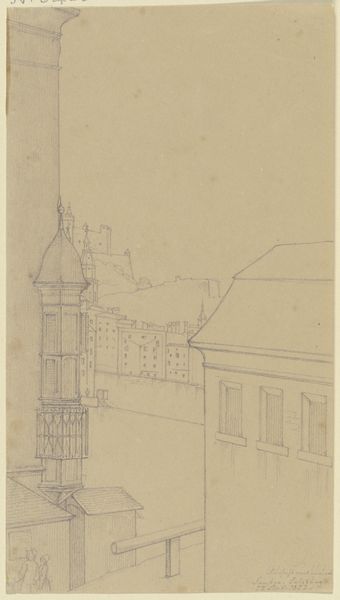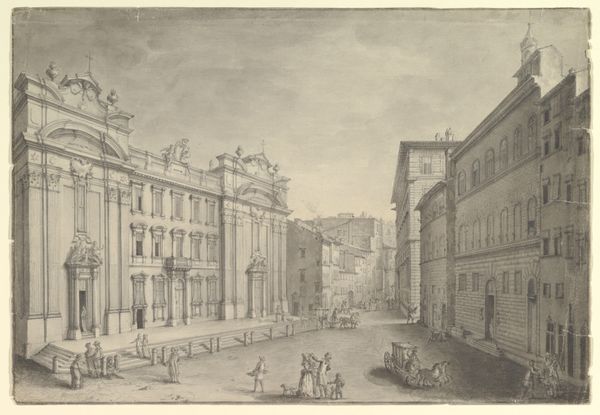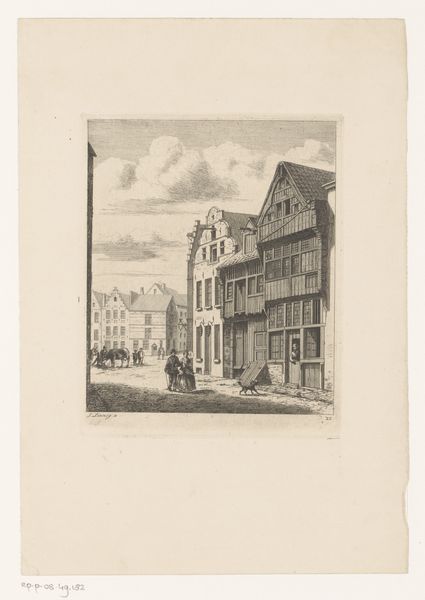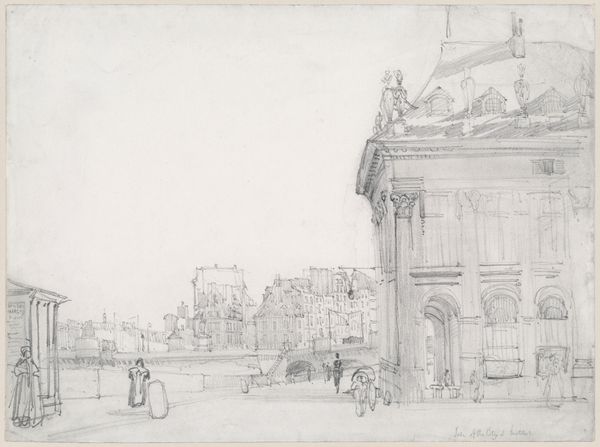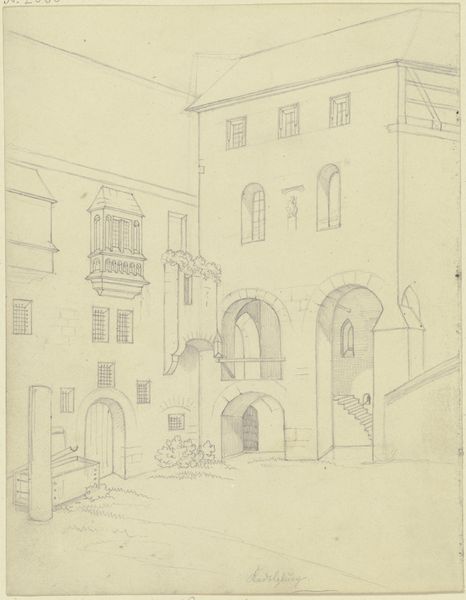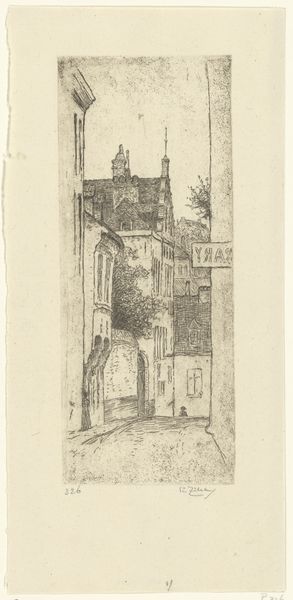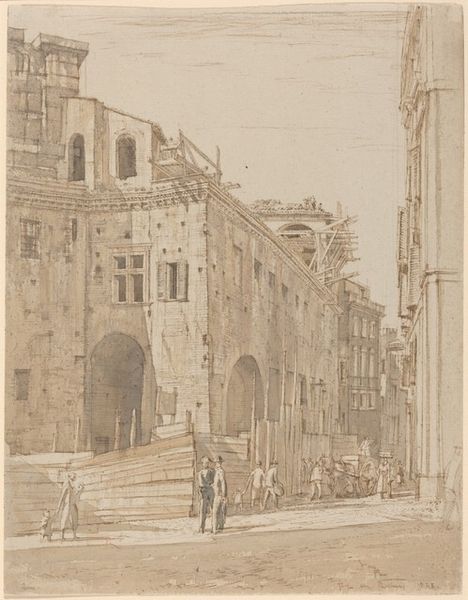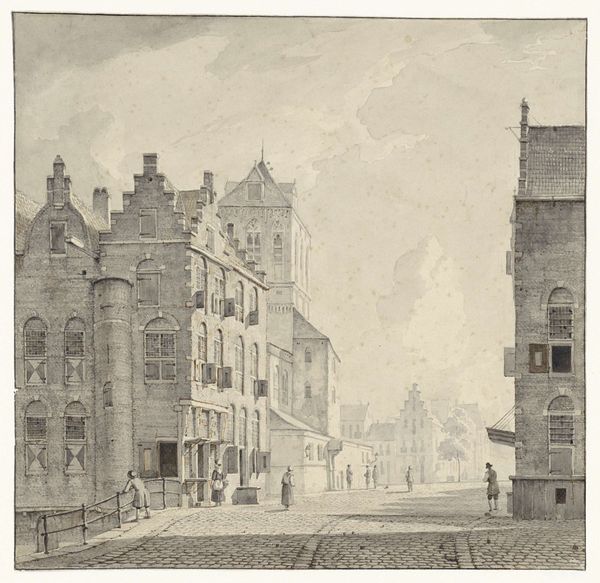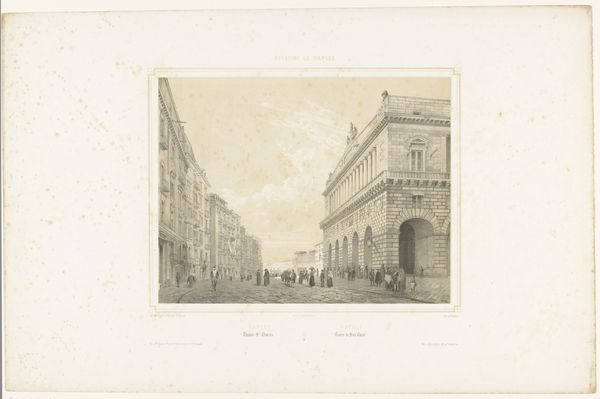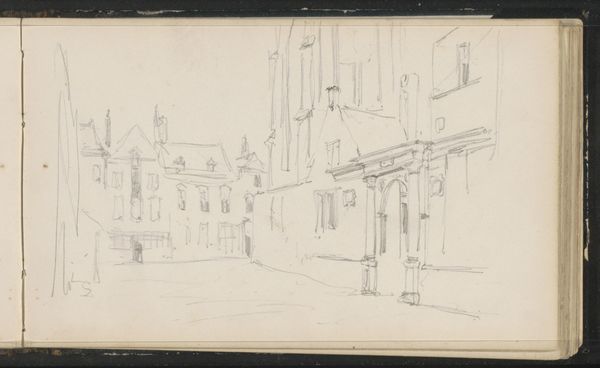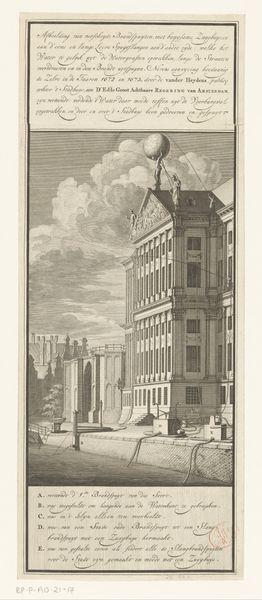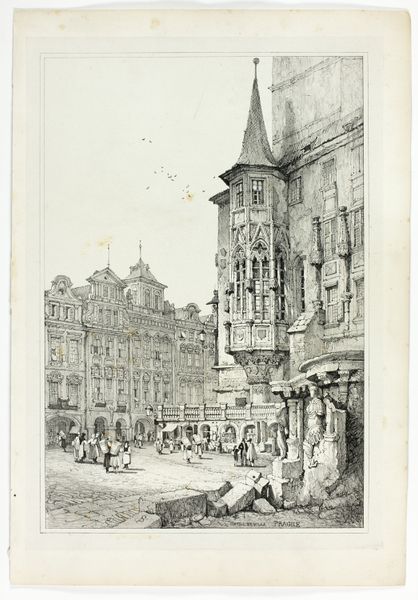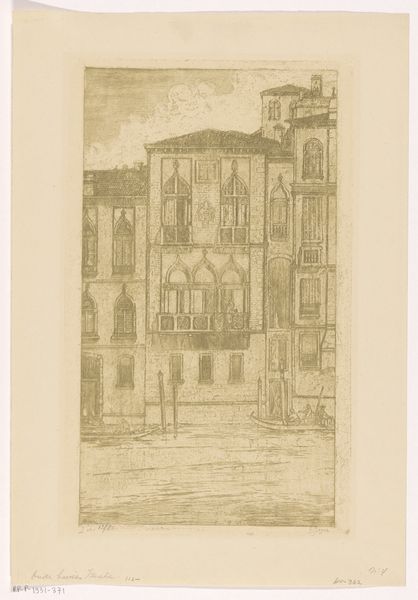
Kongens Nytorv. Parti af Charlottenborg og Thotts palæ 1825 - 1828
0:00
0:00
drawing, pencil, architecture
#
drawing
#
pencil sketch
#
landscape
#
etching
#
romanticism
#
pencil
#
architectural drawing
#
cityscape
#
architecture
Dimensions: 285 mm (height) x 243 mm (width) (bladmaal)
Curator: Oh, this is a striking piece by Albert Küchler, dating back to between 1825 and 1828. It's titled "Kongens Nytorv. Parti af Charlottenborg og Thotts palæ," a drawing rendered in pencil. Editor: Immediately, it feels…almost dreamlike, doesn't it? The precision of the architectural details contrasted with the lightness of the pencil—it's like seeing a city in a memory. Curator: It certainly captures a specific moment. Küchler was quite adept at depicting Copenhagen's architectural landscape. His technique focuses our attention on Charlottenborg Palace, showcasing it next to Thotts Palace on Kongens Nytorv. It's a fascinating study of spatial relations, wouldn't you agree? Editor: Absolutely, it's a clever framing. And that shadow slicing across the facade... Dramatic! Reminds me how powerful simple light and shade can be to evoke a sense of place. What strikes me most is the apparent absence, or perhaps reduction, of bustling urban life. You can just make out the people; they're barely hinted at. Curator: That restraint allows for a broader commentary on civic space and societal structures, it gives a kind of power to the buildings as cultural statements. It's as though the buildings themselves are the main actors, with human activity almost secondary, revealing their solid influence over time. Küchler had a real interest in history. Editor: Yes, there's a sense of permanence, as though these buildings have stood witness to countless untold stories and dramas. The muted palette further enhances the romantic sentimentality. It reminds us that cities are more than brick and mortar; they're repositories of shared history and memory. Curator: Very nicely put! It’s interesting to see this interplay between architectural precision and emotive depiction. Küchler's piece stands as not just an illustration but a carefully considered artistic interpretation of place and power. Editor: It certainly encourages reflection on how the architecture we inhabit shapes our perceptions and even our own identities, doesn’t it? Thank you for bringing it to life for me!
Comments
No comments
Be the first to comment and join the conversation on the ultimate creative platform.
